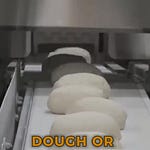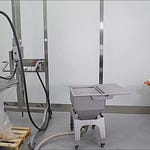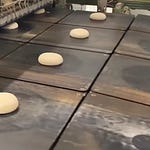This issue is linked to the structural transformation that occurs within the dough during frying, specifically the transition from a foam-like structure to a sponge-like matrix.
The Science Behind Doughnut Structure
During frying, doughnuts initially have a foam structure, where gas bubbles are separated by a stabilizing film composed of proteins, fats, and emulsifiers. This structure allows the dough to expand and maintain volume.
As the dough heats up, it undergoes a foam-to-sponge transition, where the individual gas bubbles interconnect, allowing gases and liquids to move more freely through the matrix.
A critical factor in this transition is starch gelatinization, which helps solidify the dough’s structure. However, certain formulation choices can delay this process. Specifically, sugar (often present in high amounts in doughnut recipes) raises the temperature required for starch gelatinization.
If the center of the doughnut does not reach this temperature before frying is complete, the foam structure remains unstable. As the doughnut cools, internal gas pressure drops and the external atmospheric pressure becomes greater than the internal pressure, causing the doughnut to shrink or wrinkle.
Practical Solutions to Prevent Doughnut Collapse
Reduce Sugar Content
Since sucrose delays starch gelatinization, reducing the sugar level in the dough formulation can promote earlier gelatinization, leading to better structural integrity before the doughnut leaves the fryer.
Optimize Dough Gas Retention
Adjusting the dough formulation to slightly reduce its gas-retention properties can prevent excessive expansion that leads to post-frying shrinkage. However, this must be balanced carefully to avoid loss of overall volume.
Introduce Mechanical Shock
In some cases, applying a controlled mechanical shock—such as lightly tapping or shaking the trays when removing doughnuts from the fryer—can help stabilize the internal structure and prevent collapse.
Improve Heat Transfer During Frying
Ensuring even heat distribution in the fryer can help achieve a uniform foam-to-sponge transition. Adjusting frying times and temperatures can also help maintain the structural integrity of the doughnut.











